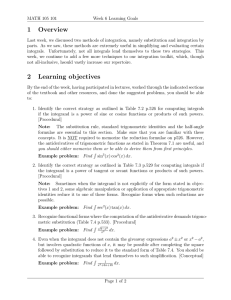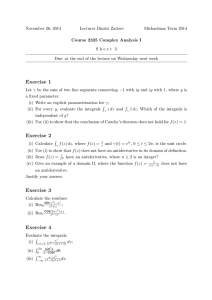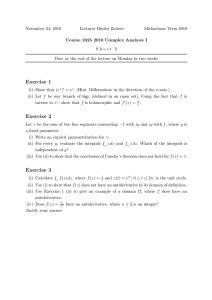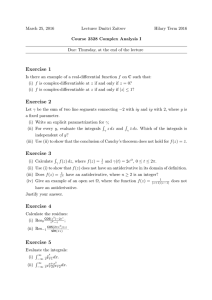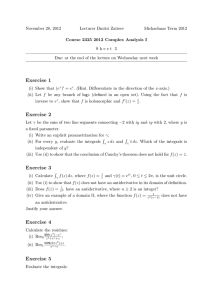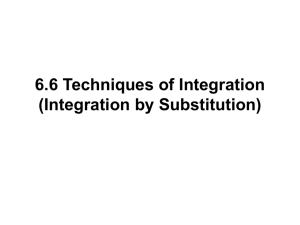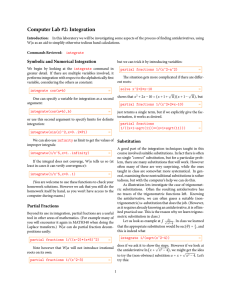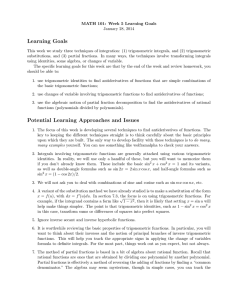Math 105 Course Outline Overview Week 7
advertisement
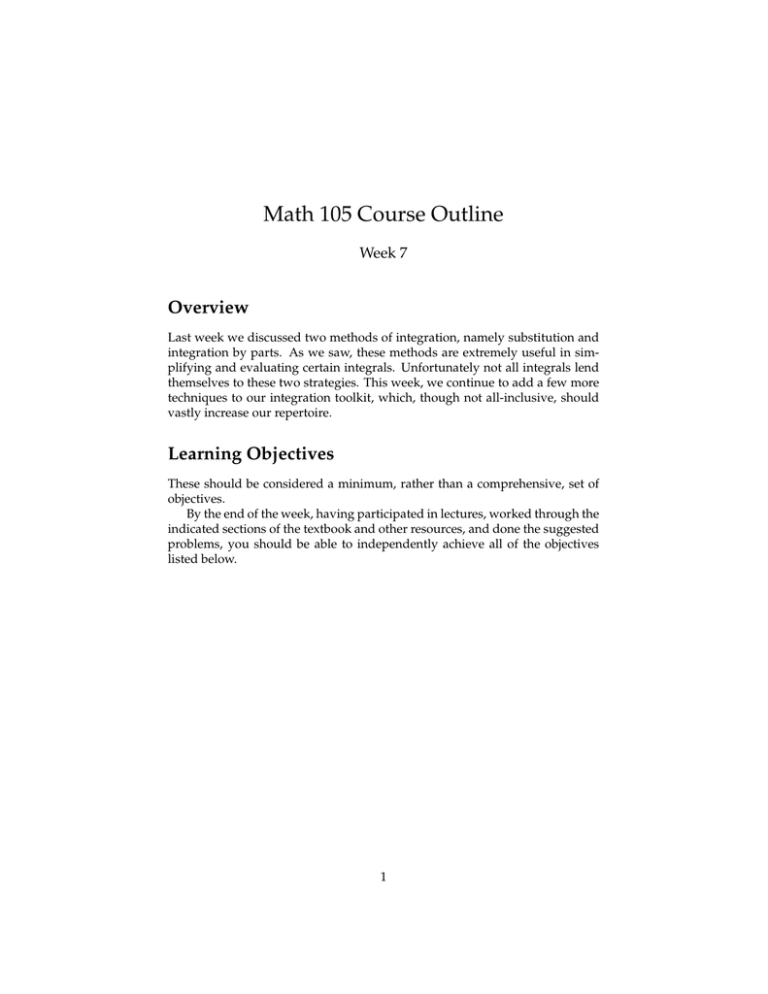
Math 105 Course Outline Week 7 Overview Last week we discussed two methods of integration, namely substitution and integration by parts. As we saw, these methods are extremely useful in simplifying and evaluating certain integrals. Unfortunately not all integrals lend themselves to these two strategies. This week, we continue to add a few more techniques to our integration toolkit, which, though not all-inclusive, should vastly increase our repertoire. Learning Objectives These should be considered a minimum, rather than a comprehensive, set of objectives. By the end of the week, having participated in lectures, worked through the indicated sections of the textbook and other resources, and done the suggested problems, you should be able to independently achieve all of the objectives listed below. 1 Ref 07–01 Learning Objective Trigonometric integrals Objective 1: Given a definite or indefinite integral where the integrand is a power of sine or cosine functions or product of such powers, identify the correct strategy (as outlined in Table 7.1) for computing this integral. [Procedural] The substitution rule (section 5.5), standard trigonometric identities and the half-angle formulae are essential to this section. Make sure that you are familiar with these concepts. It is not necessary to memorize the reduction formulae on page 463. However, the antiderivatives of tan x and sec x stated in Theorem 7.1 may be useful later. You should either memorize them or be able to derive them from first principles. R problem: Evaluate the integrals sin5 x cos−2 x dx and RExample sin2 x cos4 x dx. Objective 2: Find the antiderivative of a product of powers of tangent and secant functions, applying the algorithm outlined in Table 7.2. [Procedural] Example problem: sec−2 x tan3 x. Compute the antiderivatives of sec4 x or Reading: Text §7.2 (pp. 460 – 466) Practice problems: Text p. 466: 9 – 32. Objective 3: Sometimes, when the integrand is not explicitly of the form stated in objectives 1 and 2, some algebraic manipulation or application of appropriate trigonometric identities reduces it to one of these forms. Recognize forms when such reductions are possible. [Conceptual] Practice problems: Text p. 467: 40–49. 2 Ref 07–02 Learning Objective Trigonometric substitutions Objective 1: Recognize functional forms where the computation of the antiderivative demands trigonometric substitution. See Table 7.3. [Procedural] Example problem: Find the antiderivative of x−3 (x2 − 1)−1/2 . Reading: Text §7.3 (pp. 468 – 472) Practice problems: Text p. 473: 7 – 46 Objective 2: Even when the integrand does not contain the giveaway expressions a2 ± x2 or x2 − a2 , but involves quadratic functions of x, it may be possible after completing the square followed by subsitution to reduce it to the standard form of Table 7.3. You should be able to recognize integrands that lend themselves to such simplifiction. [Conceptual] R 2 Example problem: Evaluate the indefinite integral x√x+2x+4 dx. 2 −4x Reading: Text §7.3 (p. 472) Practice problems: Text p. 473: 48–55 3 Ref 07–03 Learning Objective Partial fractions Objective 1: Given a rational function f (x) = p(x)/q(x) where q is a polynomial with distinct real roots, be able to describe the main steps of the method of partial fractions involving simple linear factors, as outlined in the procedure table on page 478. [Procedural] We will not be covering partial fractions with repeated linear factors or irreducible quadratic factors (simple or repeated). Example problem: Find the antiderivative of (x2 − x − 6)−1 . Reading: Text §7.4 (pp. 476 – 479) Practice problems: Text p. 483: 5– 18 Objective 2: Occasionally some initial preparation of the integrand is necessary before applying the method of partial fractions. This could involve substitution or long division of the numerator p by the denominator q if the rational function is improper (i.e., degree of p is at least as large as that of q). You should be able to recognize when such a mix of strategies are called for. [Conceptual] Practice problems: Text p. 484: 49, 51–53, 57–58, 60–62. 4
